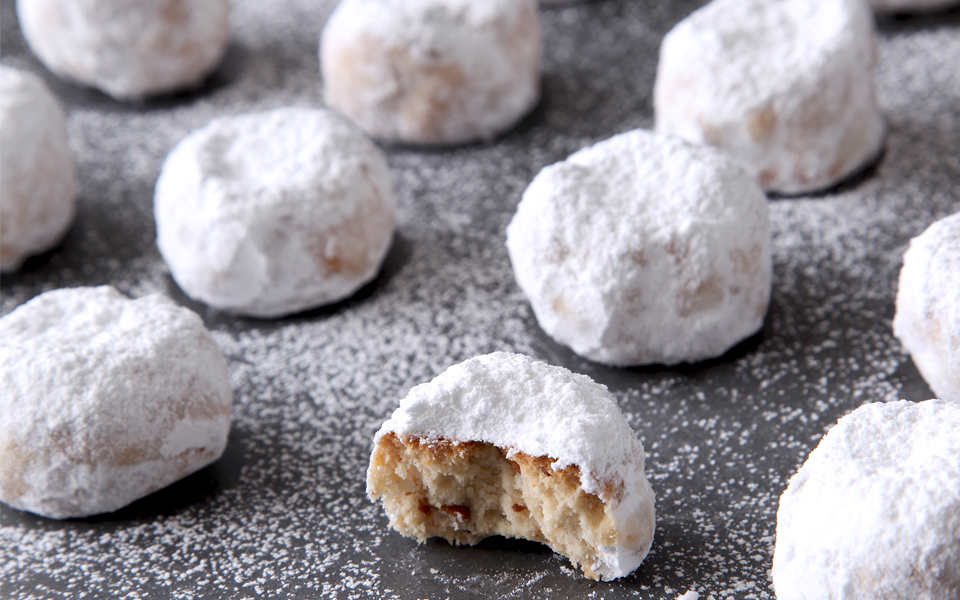Samos Summers Still Feel Like the 1980s
There’s something about Samos in summer...

This snowy confection is a piece of Greek Christmas tradition.
© Akis Orfanidis
Mama shaped them round. Grandma always made them crescent – shaped, following the recipe of legendary Greek chef and cookbook writer, Tselementes. Both versions were made with the best butter that had irresistible aroma and taste.
At this time of year when Christmas is all around, I close my eyes and I am transported back to the kitchen of my childhood home. It’s as if I can see the two different shapes on the kitchen counter, each baked with all the love and affection of Christmas poured into them.
This snowy confection is a piece of Greek Christmas tradition and has been a part of every child’s memories for hundreds of years. In Athens and Thessaloniki alone every November and December, around 10 tons of kourabiedes are sold just by the Konstantinidis patisserie chain, so you can imagine how many are sold around the country as every bakery starts producing them!
In Turkey, they are known as Kurabiye, in Azerbaijan, Qurabiya and in the Middle East, Ghraibeh. The name is the literal combination of two words, kuru – dry, and biye – biscuit. Looking into the etymology of these treats, we arrive at a word from the Middle Ages – biscuit, which meant baked twice. It was a way of baking bread that ensured easy preservation and a product that wouldn’t spoil quickly. In the book “Ottoman Cookery” by Turabi Efendi (1864), kourabiedes are made with equal amounts of sugar and butter and double the amount of flour. Old Greek recipe books spun the name with a French touch and dubbed them quourabier! “You can give them any shape you want, arrange them on a baking sheet and bake them in a medium-hot oven,” writes Nikolaos Vasilakis in his 1892 recipe book.
I’m not sure if anyone today goes to the trouble of making homemade kourabiedes. Thankfully, there are plenty of patisseries which produce them on a mass scale but with a homemade flavor. So place a big, snowy plate of them on your Christmas and New Year table and don’t be scared to let yourself get covered in icing sugar as you eat them. In Greece, that’s part of the joy of the holiday season!
Originally published in Kathimerini’s K magazine.
There’s something about Samos in summer...
In Margarites, Crete’s historic pottery village,...
Mischievous Greek goblins, the Kallikantzaroi emerge...
Discover the rich flavor of homemade...